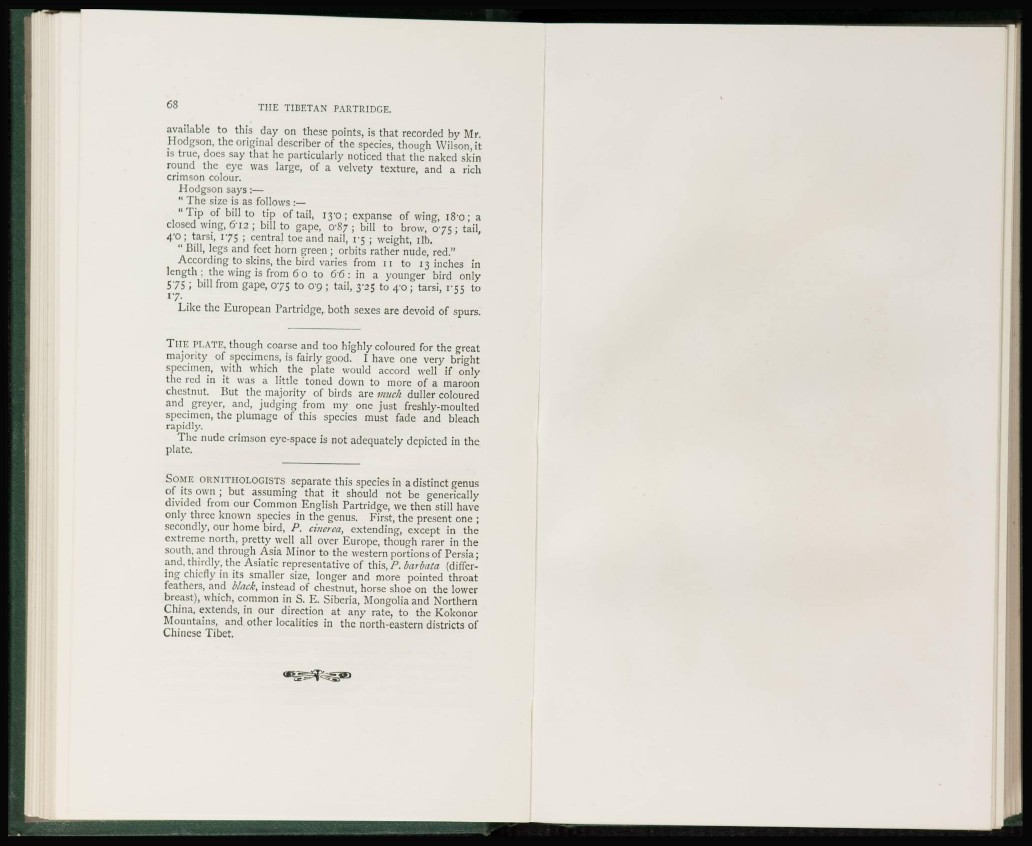
available to this day on these points, is that recorded by Mr.
Hodgson, the original describer of the species, though Wilson, it
is true, does say that he particularly noticed that the naked skin
round the eye was large, of a velvety texture, and a rich
crimson colour.
Hodgson says:—
" The size is as follows :—
" T i p of bill to tip of tail, I3'0; expanse of wing, l8'0; a
closed wing, 6' I2 ; bill to gape, 087 ; bill to brow, 075 ; tail,
4P0; tarsi, 175 ; central toe and nail, l'5 ; weight, lib.
" Bill, legs and feet horn green ; orbits rather nude, red."
According to skins, the bird varies from n to 13 inches in
length :, the wing is from 6 o to 6'6 : in a younger bird only
575 ; bill from gape, 075 to o g ; tail, 3^25 to 4 0 ; tarsi, i"55 to
17.
Like the European Partridge, both sexes are devoid of spurs.
T H E PLATE, though coarse and too highly coloured for the great
majority of specimens, is fairly good. I have one very bright
specimen, with which the plate would accord well if only
the red in it was a little toned down to more of a maroon
chestnut. But the majority of birds are much duller coloured
and greyer, and, judging from my one just freshly-moulted
specimen, the plumage of this species must fade and bleach
rapidly.
The nude crimson eye-space is not adequately depicted in the
plate.
SOME ORNITHOLOGISTS separate this species in a distinct genus
of its own ; but assuming that it should not be generically
divided from our Common English Partridge, we then still have
only three known species in the genus. First, the present one ;
secondly, our home bird, P. cinerea, extending, except in the
extreme north, pretty well all over Europe, though rarer in the
south, and through Asia Minor to the western portions of Persia;
and. thirdly, the Asiatic representative of this, P. barbata (differing
chiefly in its smaller size, longer and more pointed throat
feathers, and black, instead of chestnut, horse shoe on the lower
breast), which, common in S. E. Siberia, Mongolia and Northern
China, extends, in our direction at any rate, to the Kokonor
Mountains, and other localities in the north-eastern districts of
Chinese Tibet.